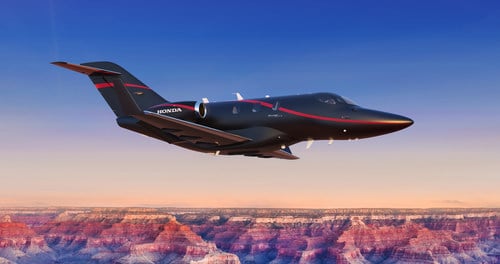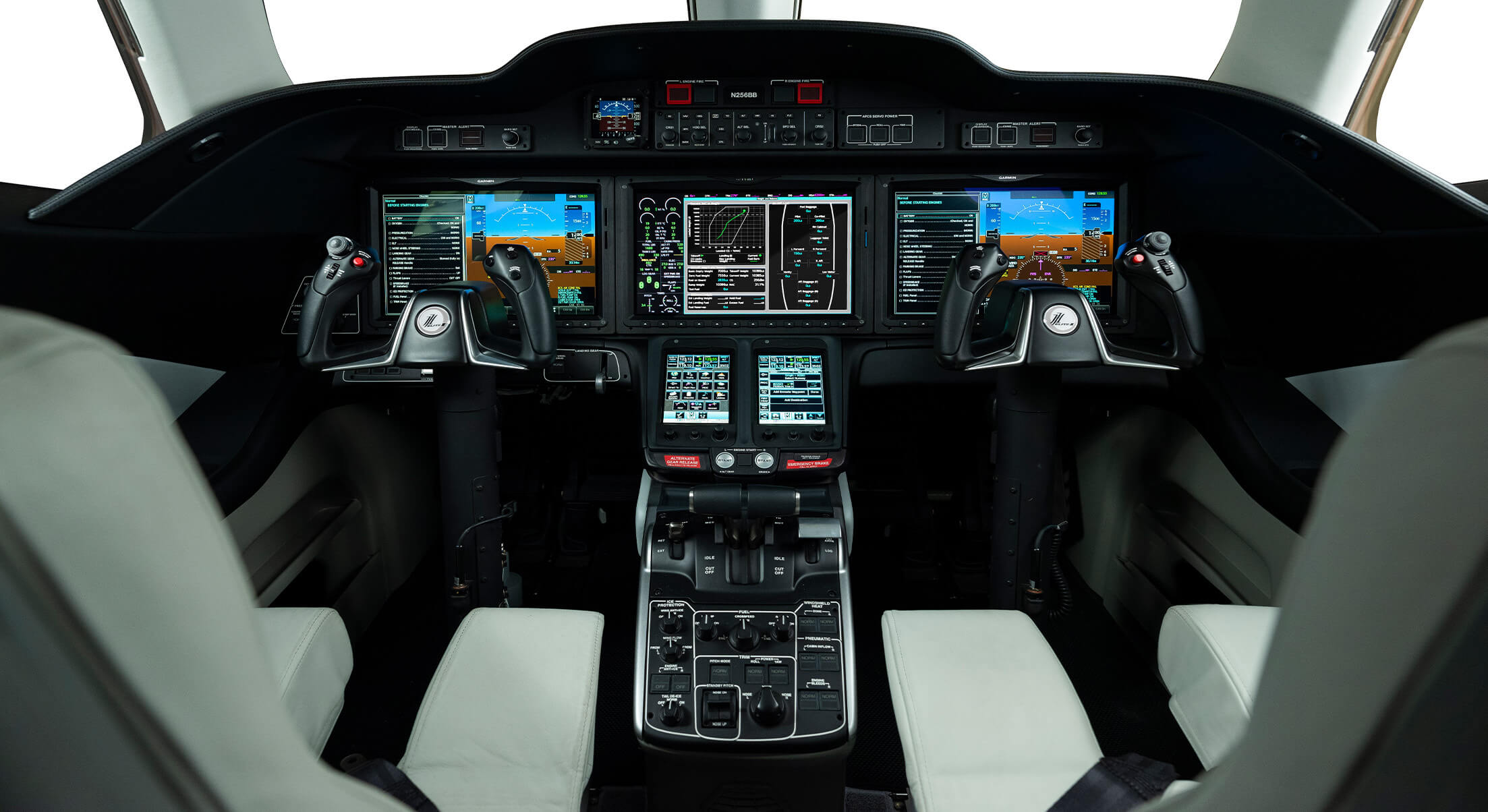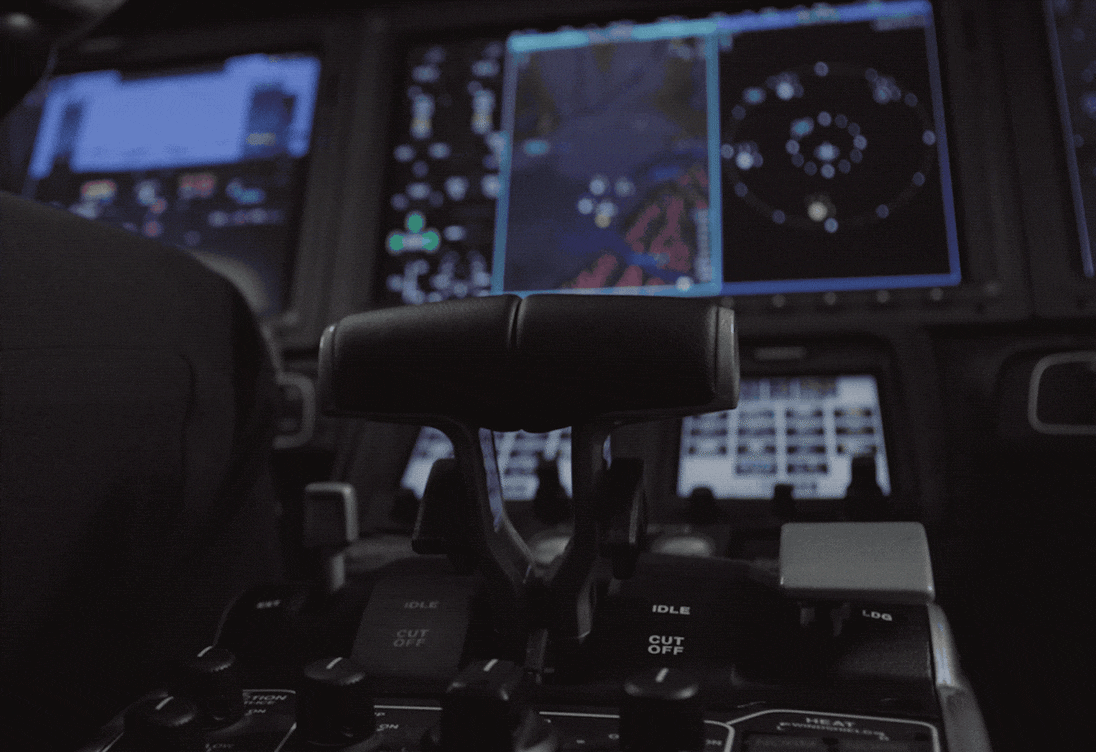Aerospace
Honda Aircraft Company Reveals Latest Aircraft – the HondaJet Elite II
Honda Aircraft Company today revealed the “HondaJet Elite II”

Honda Aircraft Company today revealed the “HondaJet Elite II” at the 2022 National Business Aviation Convention and Exhibition (NBAA-BACE), a new upgraded aircraft that features a host of key advancements in performance and comfort. The company also announced the introduction of automation technologies.

HondaJet Elite II is the fastest, highest, and farthest flying aircraft in its class, achieving a whole new level of performance that redefines what it means to be a very light jet. With an expanded range of 1,547 nm, the Elite II now extends HondaJet’s reach to more destinations while maintaining its position as the most fuel-efficient aircraft in its class.
[adinserter block="2"]
Top 10 most expensive private jets in the world.(Opens in a new browser tab)
Honda Aircraft Company also plans to introduce Autothrottle and Emergency Autoland by the end of 2023. This direction encapsulates the continuous effort to improve the HondaJet through automation, augmentation, and situational awareness technologies, to enhance operational safety and reduce pilot workload while aligning with global Honda’s commitment to advances in safety technology.

The HondaJet Elite II features a fully redesigned cabin and the introduction of two new interior design options – Onyx and Steel, featuring new surface materials and colors. The cabin redesign led to a modern luxury of flight experience with a holistic approach to comfort that includes a nose-to-tail acoustic treatment, creating a tranquil space for both passengers and pilots.
[adinserter block=”2″]
Key new features of the HondaJet Elite II
- Range: 1,547 nautical miles*1
- Increased Fuel Capacity: additional space to carry more fuel
- Increased Gross Weight: maximum takeoff weight of 11,100 pounds
- New Ground Spoiler: optimizes takeoff and landing field performance with increased weight.
U.S. Army Orders Additional Enhanced CH-47F Block II Chinooks(Opens in a new browser tab)
Avionics Technology
Building on the highly customized HondaJet avionics suite based on the Garmin® G3000, the Elite II introduces several new advanced features enabling more automation and augmentation, which enhances operational safety and reduces pilot workload for more efficient operations, while bringing new technologies to HondaJet customers.
- Stabilized Approach – assists the pilot with aural and visual alerts to maintain a stable aircraft state on approach.
- Autothrottle*2 – reduces pilot workload through the automation of power management based on desired flight characteristics through all phases of flight, allowing for more precise and efficient performance from the aircraft (available first half of 2023).
- Emergency Autoland*2 – Garmin Autoland activates in an emergency situation to autonomously control and land the aircraft without human intervention (available second half of 2023).
[adinserter block=”2″]
New Interior Options and Other Upgraded Features
- New Interior colors
- Onyx: a rich and warm neutral greige cabin theme with mid-tone wood accents.
- Steel: a modern light cool grey theme with high contrast marble accents.
- New aisle flooring with a hardwood herringbone and plank patterns*2
- Acoustic Enhancement: nose-to-tail acoustic treatment for a tranquil cabin experience.
- Sheepskin covers available for pilot seats*2
- Additional 3-inches of legroom configuration available for crew seat with extended seat track*2
- Interior multi-color LED lighting with the soft indigo nighttime setting.
- Ground illumination on the main entry door.
- Integrated exterior lights.
[adinserter block=”2″]

Aerospace
Boeing Transfers Rocket Stage to NASA, Paving Way for Human Moon Mission

Boeing has achieved a significant milestone by providing NASA with the second core stage of the Space Launch System (SLS) rocket.
This crucial component, crafted at NASA’s Michoud Assembly Facility (MAF), is set to propel the Artemis II crew into lunar orbit, marking humanity’s return to deep space after a 50-year hiatus.
The monumental Boeing-built rocket stage, the largest element of the Artemis II mission, will embark on a journey aboard the Pegasus barge, traveling 900 miles to NASA’s Kennedy Space Center.
Comparison of two legendary aircraft B777x vs B747 aircraft:Click here
Upon arrival, it will be meticulously integrated with other essential Artemis II components, including the upper stage, solid rocket boosters, and NASA’s Orion spacecraft within the iconic Vehicle Assembly Building. This intricate integration process is a vital step toward the eagerly anticipated Artemis II launch, slated for 2025.
“Boeing-built products helped land humankind on the moon in 1969, and we’re proud to continue that legacy through the Artemis generation,” remarked Dave Dutcher, vice president and program manager for Boeing’s SLS program. “Together, with NASA and our industry partners and suppliers, we are building the world’s most capable rocket and paving the way to deep space through America’s rocket factory in New Orleans.”
NASA, Lockheed Martin Reveal X-59 Quiet Supersonic Aircraft:Click here
The delivery of Core Stage 2 marks a significant achievement in the evolution of the SLS rocket. Towering over 200 feet and powered by four RS-25 engines, this core stage, coupled with two solid-fueled booster rockets, will generate a staggering 8.8 million pounds of thrust. This immense power is crucial to launching Artemis II and future missions into the vast expanse of space.
The SLS rocket stands unparalleled in its capability to transport both crew and substantial cargo to the moon and beyond in a single launch. Its extraordinary capacity will facilitate the delivery of human-rated spacecraft, habitats, and scientific missions to destinations including the moon and Mars, ushering in a new era of space exploration.
-

 Travel1 week ago
Travel1 week agoAir India to Expand US Operations with Three New Routes After a Decade
-

 Travel2 weeks ago
Travel2 weeks agoWhy We Should Avoid These Stamps in a Passport
-

 Airlines1 month ago
Airlines1 month agoInvestigations Reveal Fake Chinese Titanium in Boeing and Airbus Jets
-

 Tech4 weeks ago
Tech4 weeks agoChina’s CATL Plans 1,800-Mile Electric Plane Launch by 2027
-

 Airport3 days ago
Airport3 days agoTop 10 Largest Airports in the World by Size
-

 Aerospace4 weeks ago
Aerospace4 weeks agoChina’s Fighter Jets Turn Wings into Autonomous Drones
-

 Airlines4 days ago
Airlines4 days agoAir India Rolls Out A350s for Delhi-New York JFK and Newark Routes
-

 Defence3 weeks ago
Defence3 weeks agoBoeing Enhances Chinook with New Engines and Block II Upgrades at $96 Million







